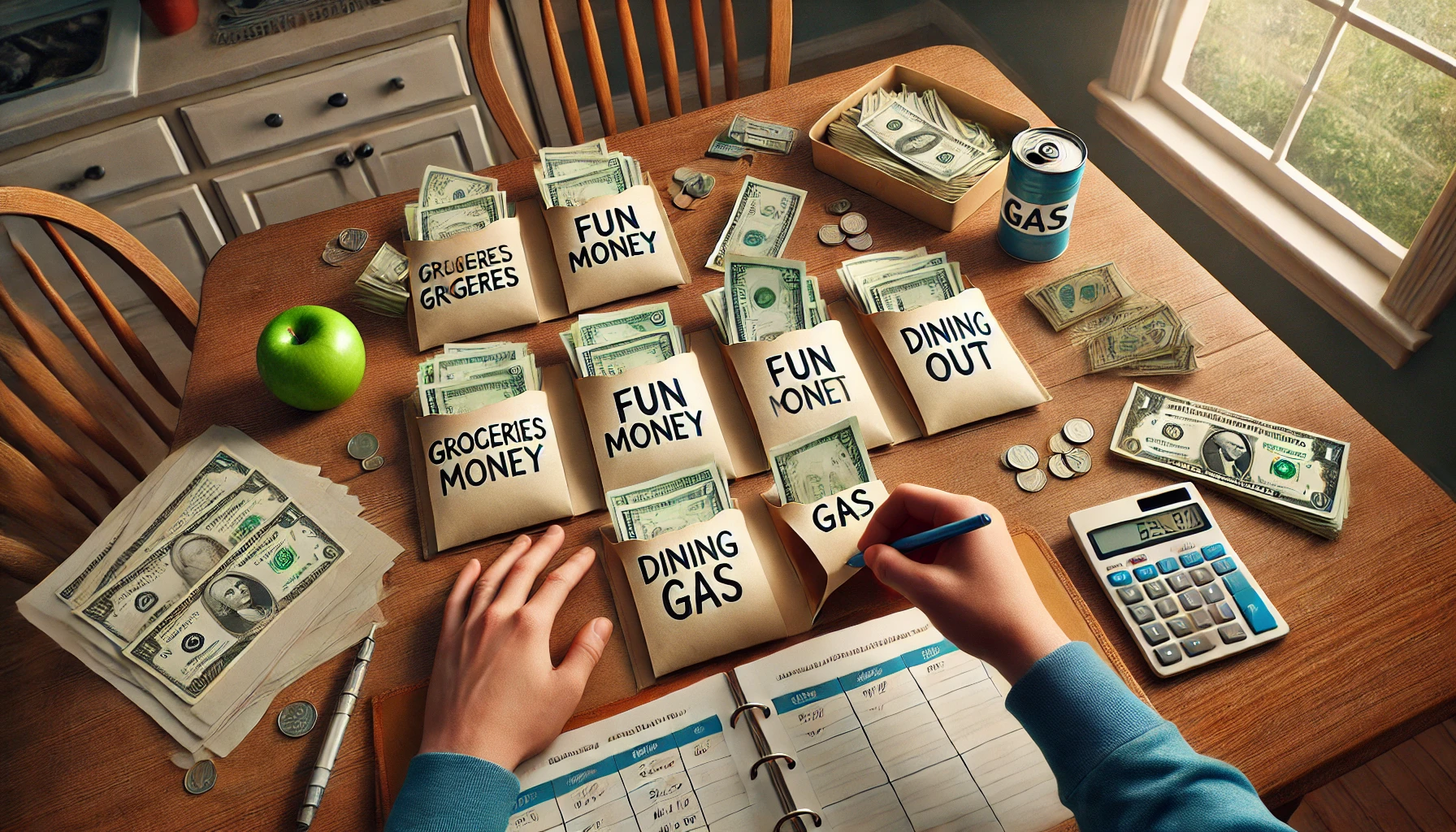Ever swipe your card and think, “Wait — how did I spend that much?”
You’re not alone. When spending is too easy, it’s easy to lose track.
That’s where the cash envelope system comes in — a simple, old-school method that still works today.
It helps you stay within budget, reduce impulse spending, and feel more in control of your money.
Let’s explore how to make it work for your family — even in a digital world.
Step 1: Understand What the Cash Envelope System Is
It’s simple:
- You divide your monthly spending money into categories (like groceries, fun, gas, etc.)
- You put the planned amount of cash into envelopes labeled by category
- When the envelope is empty, you stop spending — until the next budget cycle
It turns abstract numbers into tangible limits.
Step 2: Choose the Categories That Make Sense for Cash
Not all spending works well in cash — like online bills or subscriptions.
But for variable expenses, cash works great:
- Groceries
- Dining out
- Fun or entertainment
- Gas
- Clothing
- Kids’ allowance
- Household items
Start with 3–5 categories that often go over budget.
Step 3: Decide on Your Budgeted Amount Per Category
Use your monthly income and expenses to decide how much cash to allocate to each envelope.
Example:
- Groceries: $600
- Dining out: $150
- Fun: $100
- Gas: $200
- Kids: $50
You can divide it weekly or do the full month at once.
💡 Tip: Start small — you can always adjust next month.
Step 4: Create and Label Your Envelopes
Use:
- Actual paper envelopes
- Plastic pouches
- A divided wallet
- Or a DIY folder with labeled slots
Label clearly:
- “Groceries”
- “Eating Out”
- “Fun Money”
- “Household”
Make it easy and visual.
Step 5: Use Only What’s in the Envelope — No “Borrowing”
The key to this system is discipline.
When an envelope runs out:
- Don’t pull from another one
- Don’t swipe your card
- Get creative (cook with pantry food, plan a free activity, etc.)
Running out is part of the learning.
It helps reset habits and make spending more intentional.
Step 6: Track What You Spend From Each Envelope
You can write directly on the envelope or use a small notebook.
Track:
- Date
- Amount spent
- What it was for
- What’s left
This helps you see patterns and tweak your next budget.
Step 7: Reflect at the End of the Month
At the end of your cycle:
- Which envelopes had money left over?
- Which ran out too fast?
- What surprised you?
- What can you adjust?
Use the info to make your next round even more accurate.
Step 8: Use Leftover Cash Wisely
If you have extra cash at the end of the month, don’t just spend it!
Try:
- Adding to savings
- Putting it toward debt
- Starting a fun goal jar (like for a family trip)
- Rolling it into next month
This reinforces positive behavior and builds momentum.
Final Thoughts: Control Through Simplicity
The cash envelope system isn’t about being restrictive — it’s about being aware.
It brings your money into your hands — literally — so you can make better choices without second-guessing yourself.
Whether you do it full-time or just for a few tricky categories, it’s a simple habit that brings big results.
So grab those envelopes — and take charge of your spending.


